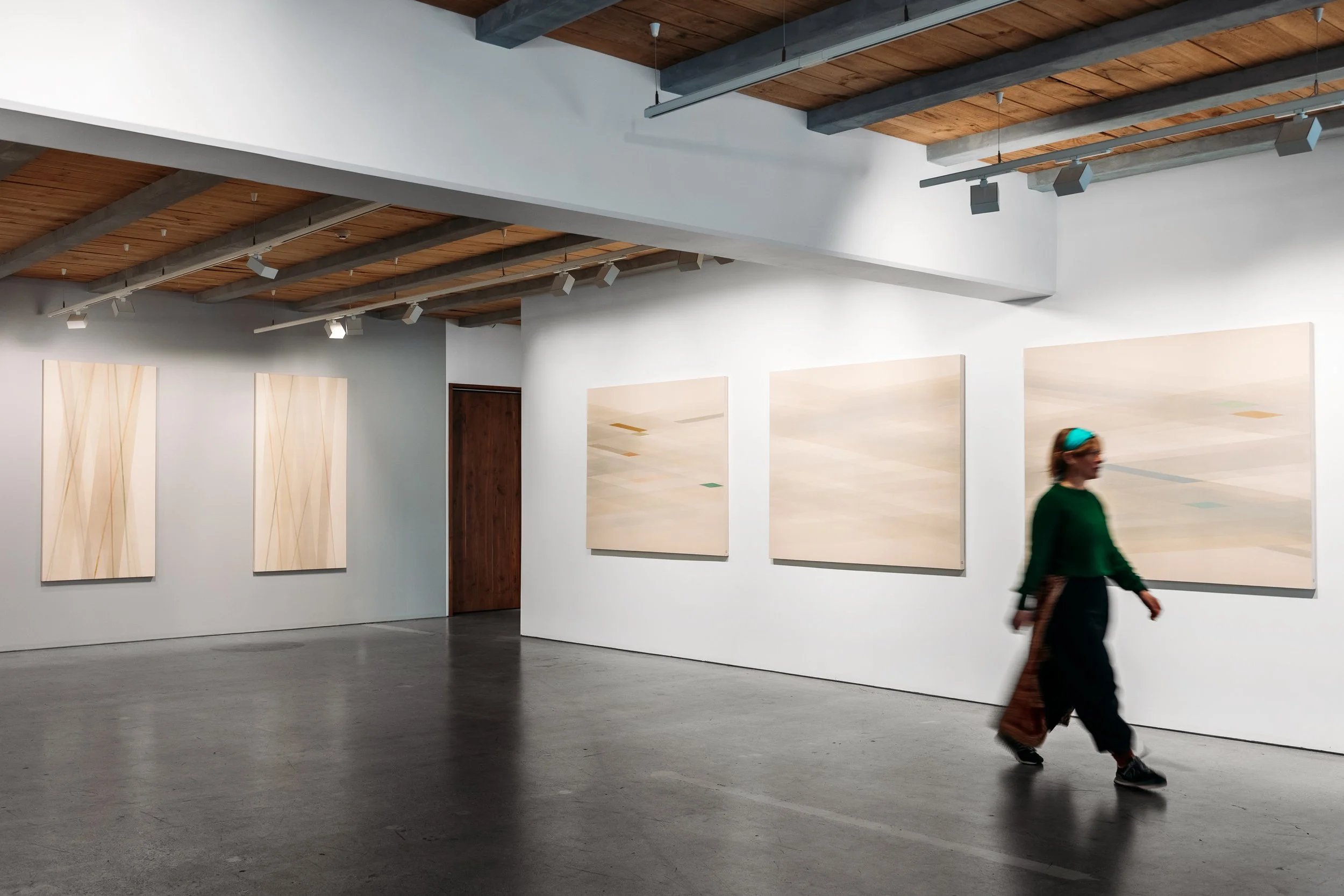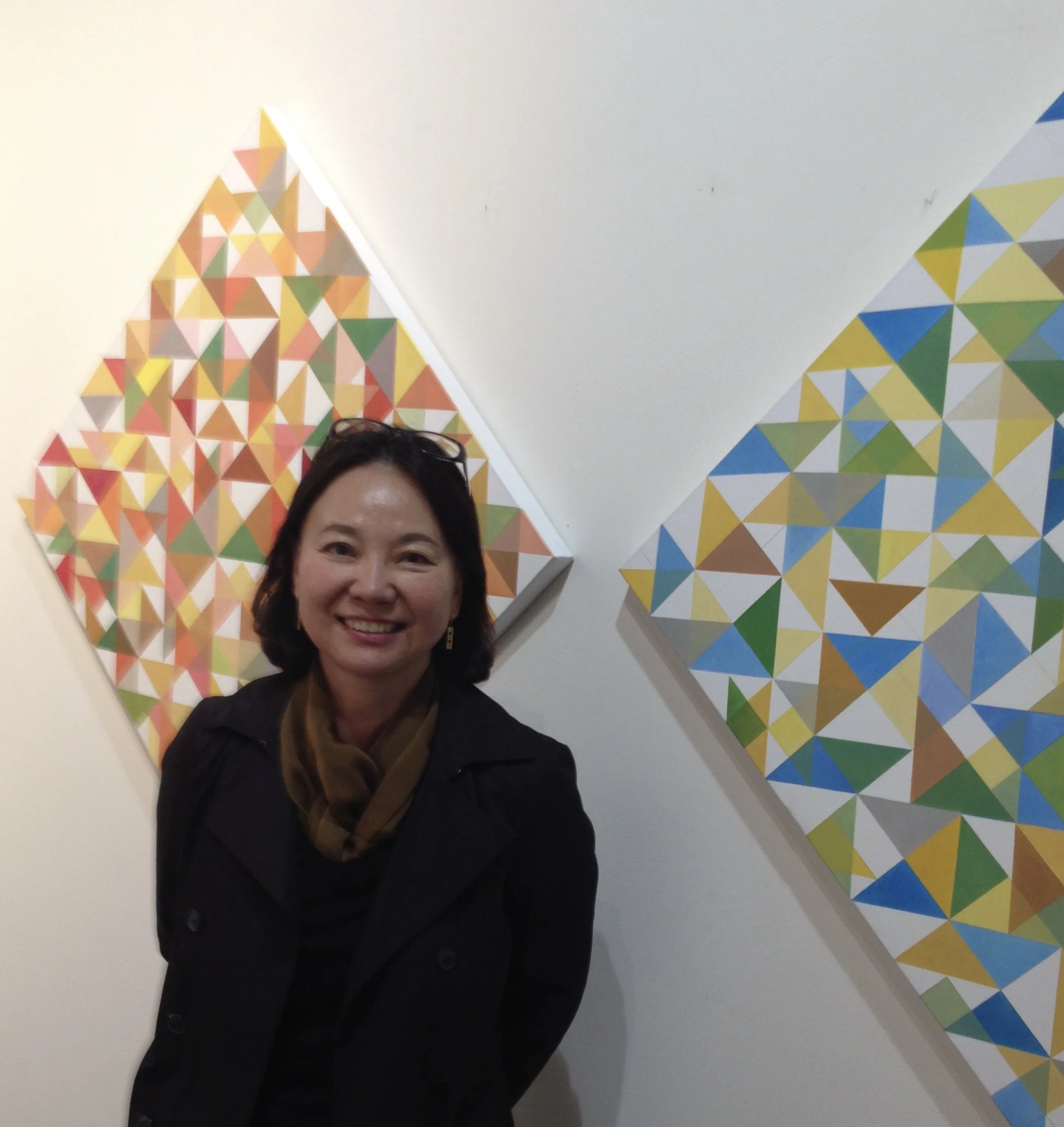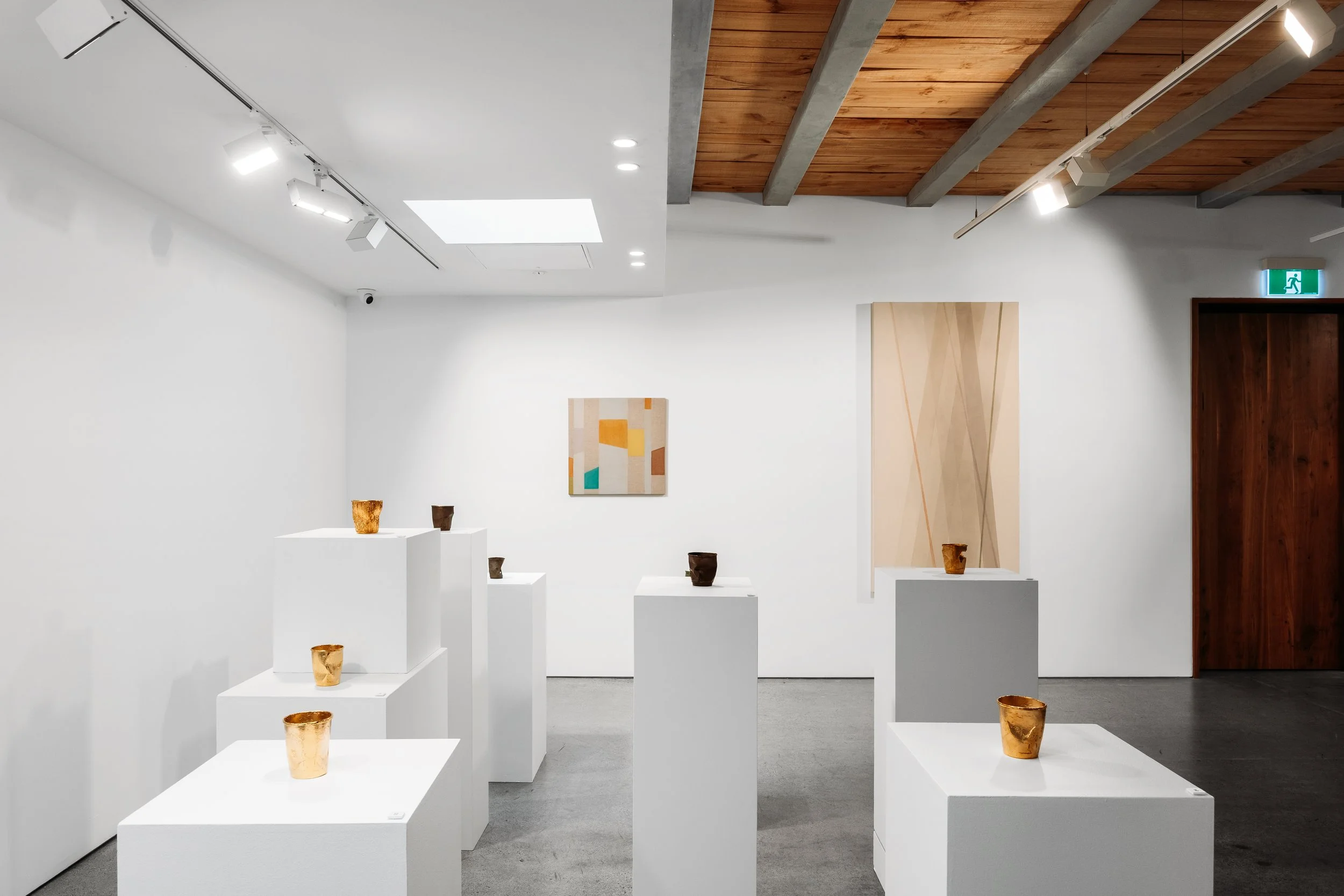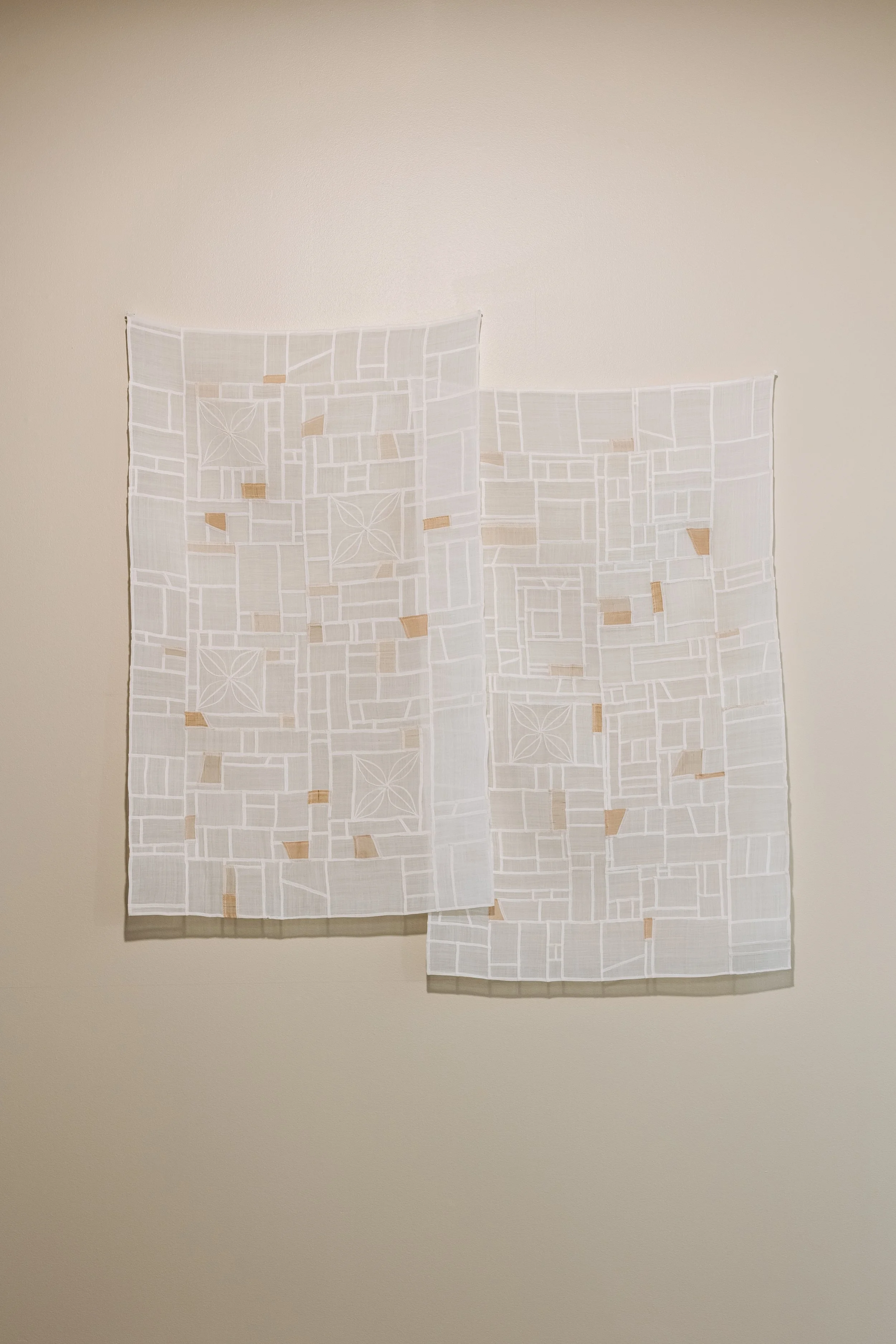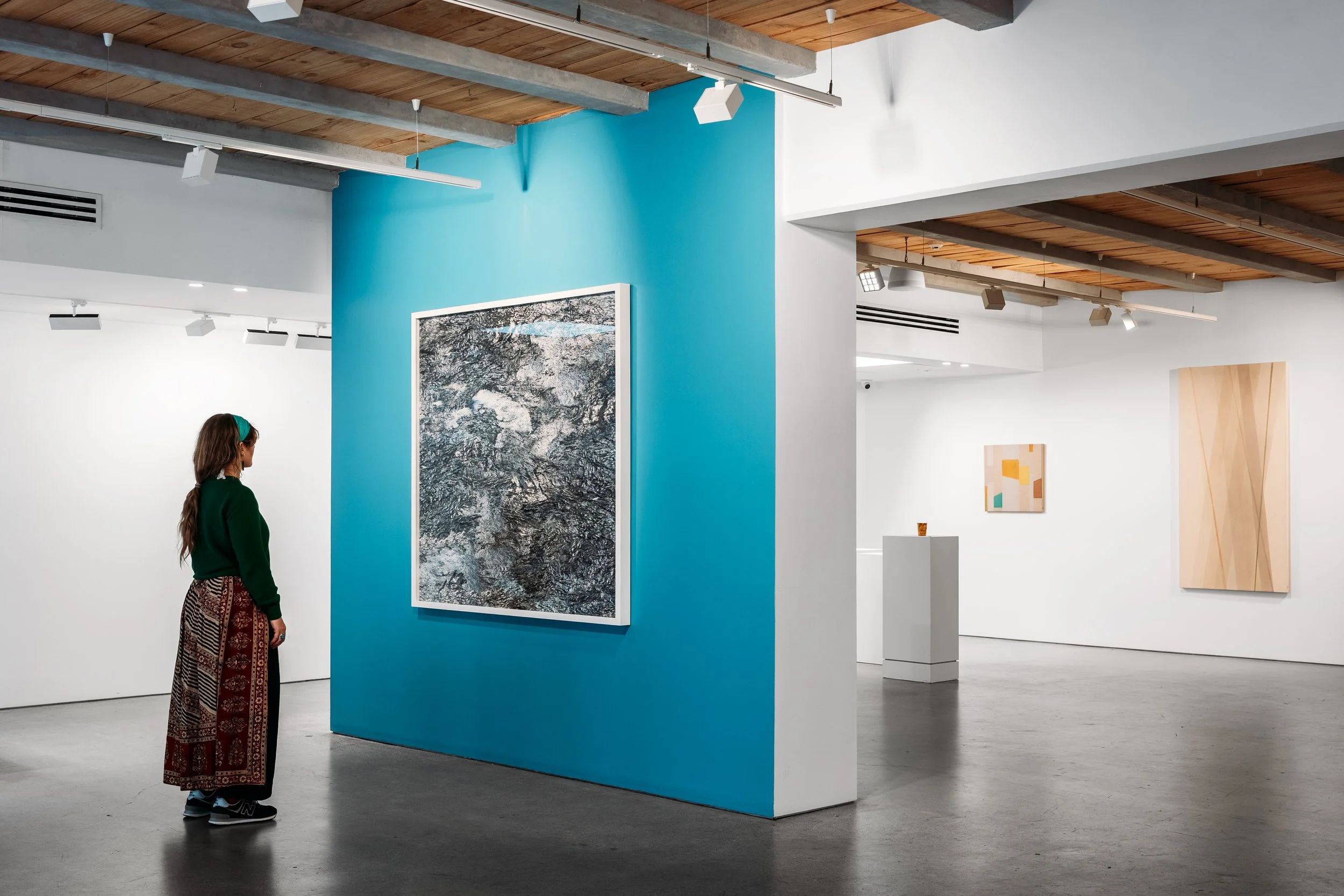Interview: Yon Yi Sohn - The Wanderers
Yon Yi Sohn forms part of The Wanderers a selling exhibition at Webb’s Wellington. We spoke to the artist about her trajectory, ideas and processes behind the works in this exhibition.
Yon Yi Sohn’s career has been forged at some of the most reputable art institutions across her native native Seoul, Hong Kong, London and now New Zealand. Her minimalist abstractions, created through drawing, painting, and embroidery, are influenced by Zen Buddhism, Stoicism, and mathematics, her works explore balance, symmetry, and organic variation, revealing the quiet tension between control and spontaneity.
Yon Yi Sohn
Webb's: Your work often explores the tension between control and spontaneity. How does this dynamic manifest in the pieces you've created for The Wanderers, and did the theme of transformation influence your approach?
Yon Yi Sohn: I’d like to begin with a quote from Gerhard Richter, who once said: “Then my work starts to instruct me.” My process is similar — I begin with a system or structure, then observe how the work develops and responds to its evolving rhythm.
The four pieces titled Waves I–IV in this exhibition each reached resolution in their own distinct ways. The theme of transformation was central to my approach. For example, I began working these pieces in a portrait orientation, but as the process unfolded, I continually rotated the canvases to explore new perspectives. Eventually, all four works resolved themselves in a landscape format. In one piece, the transformation felt complete through layers of mixed greys alone, without the need for additional colour — a decision guided by the work itself.
You mention that repetition grounds your practice. In this exhibition, how does repetition function—visually or conceptually—as a way to reflect on movement, change, or continuity?
My childhood in Korea was deeply influenced by Zen Buddhism and Taoism, both of which emphasise cultivation and continuous practice. This philosophy manifests in my work through the repetition of layered grey tones — a visual foundation symbolising meditative discipline.
Conceptually, repetition serves as a ritualistic act — a grounding rhythm through which movement, stillness, change, and continuity coexist. The resulting images embody both dynamism and tranquillity, reflecting the cyclical nature of transformation.
Your use of neutral grey as a metaphor for duality is compelling. How does this colour, or the idea behind it, interact with Jae Hoon Lee’s digitally manipulated imagery in the shared space of the exhibition?
Rather than representing duality alone, I see neutral grey as a metaphor for multiplicity — an equilibrium that holds diverse possibilities. Neutral grey mixed out of three primary colours, I believe, represents more than duality that resonates with philosophical systems such as Taoism’s yin and yang or Kant’s balance of reason and sensibility.
Grey, to me, offers a sense of peace and resolution — a harmonious middle ground. I find that Jae Hoon Lee’s digitally manipulated imagery similarly arrives at a state of emotional balance, allowing our works to converse within the shared space through a mutual sense of contemplative stillness.
Your practice spans multiple mediums—drawing, painting, embroidery, installation. For The Wanderers, how did you choose which medium to work in, and what role does materiality play in expressing the themes of place and transformation?
As my practice evolves, so does my interest in exploring different forms, processes, and materials. For The Wanderers, I focused on the grid and the placement of colour across various mediums. I included two embroidery works created during the COVID period, when my access to a painting studio was limited. These pieces resonate strongly with the exhibition’s theme — reflecting adaptability and resilience in response to life’s shifting circumstances.
The green hues in these embroideries were dyed with a mixture of vinegar and mint boiled in my London flat kitchen, transforming neutral white ramie fabric into subtly faded tones. This fading mirrors the passage of time and the impermanence of experience — a metaphor for life’s journey and transformation.
Recently, I’ve also been experimenting with unglazed clay, drawn to its raw, tactile quality. I often use transparent gesso to prime my canvases, preserving the natural texture of the fabric. This attention to materiality underscores my desire to honour the inherent character of each surface — allowing transformation to unfold without erasing origin.
Interestingly, despite the structural, grid-based nature of my compositions — which Rosalind Krauss describes as “antinatural and antireal” — I often find myself titling my abstract works with references to nature. It seems to me this irony speaks to the way organic associations emerge even within highly ordered systems.
Yon Yi Sohn is part of the selling exhibition The Wanderers scheduled to take place at Webb’s Wellington 14.10.25 — 08.11.25. She will be exhibiting alongside Jae Hoon Lee and Paul Hartigan.
Selling Exhibition
The Wanderers: Jae Hoon Lee + Yon Yi Sohn
14.10.25 — 08.11.25
webbs.co.nz
Location
Webb's Wellington Gallery
23 Marion Street, Te Aro, Wellington
Contact
Virginia Woods-Jack
Exhibitions Manager
virginia@webbs.co.nz
M +64 22 679 8664

